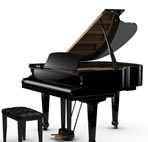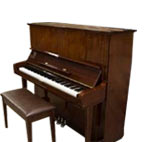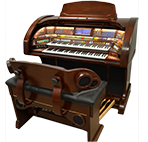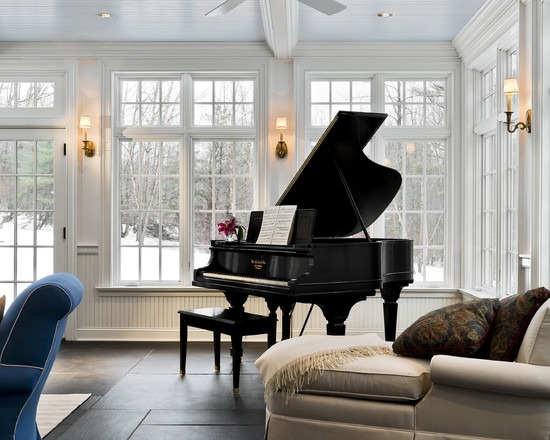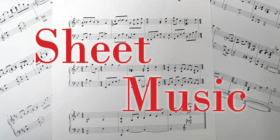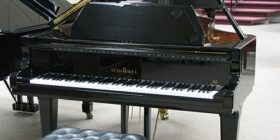The most obvious difference between ‘regular’ grands and baby grands is size. Actually, these are just two of the many standard grand piano sizes, the exact measurements of which can vary by manufacturer or location. The following are averages of the most widely-accepted:
Concert Grand: 9′ – 10′
Semiconcert: 7′ – 7’8″
Parlor: 6’3″ – 6’10”
Professional Grand: 6′
Medium Grand: 5’6″ – 5’8″
Baby Grand: 4’11” – 5’6″
Petit Grand: 4’5″ – 4’10”
Tonal Differences Among Grand Piano Sizes
Voices of the best baby grands are almost indistinguishable from those of larger grands, but this becomes less so as the size of the piano decreases.
The grand piano’s signature timbre is partially reliant on the length of its strings and soundboard (along with the quality and workmanship of these parts). Longer strings allow frequencies to resonate from a larger surface area, resulting in a more balanced, full-bodied tone.
Think of how a guitar string produces a bright, “clangy” tone when struck near the bridge, but sounds mellow and bluesy when struck in its center. This tonal spectrum widens as string length increases; and as these extremes become further apart, more vocal elements are revealed between them. Because of this enrichment, the voice of a 9′ concert grand is considered tonally superior to that of a baby grand.
But, tonal “superiority” refers to acoustics, not personal preference. If you’re looking for a tone similar to that of a full grand, invest in a model of at least 5’7″. Smaller horizontals tend to have exaggerated timbres that can vary with dynamics, or even across the octaves. However, these characteristics, which may be off-putting to some musicians, remain celebrated by others for their colorful, eclectic displays of vocal originality.
Cost of a Grand Piano
Baby grands range from $8,000-$20,000 (USD), while larger models can cost anywhere from $15,000-$150,000. Since horizontal piano depreciation is slow, new and used grand pianos tend to stay around the same price range.
Tips:
- If you opt for a baby grand because of its low price, aim for the longest model possible. Cheap, mass-produced baby grands are surpassed in quality by some electric pianos, which cost thousands less.
- Make sure your piano room will have ideal temperature & humidity levels; the elements are especially dangerous to grand pianos because of their revealing lids.
- The largest horizontal pianos take up about 63 square feet! If you plan to make such a purchase, take accurate measurements of doorways and stairwells, and throw in 2-4 feet of floor measurements for the bench.


